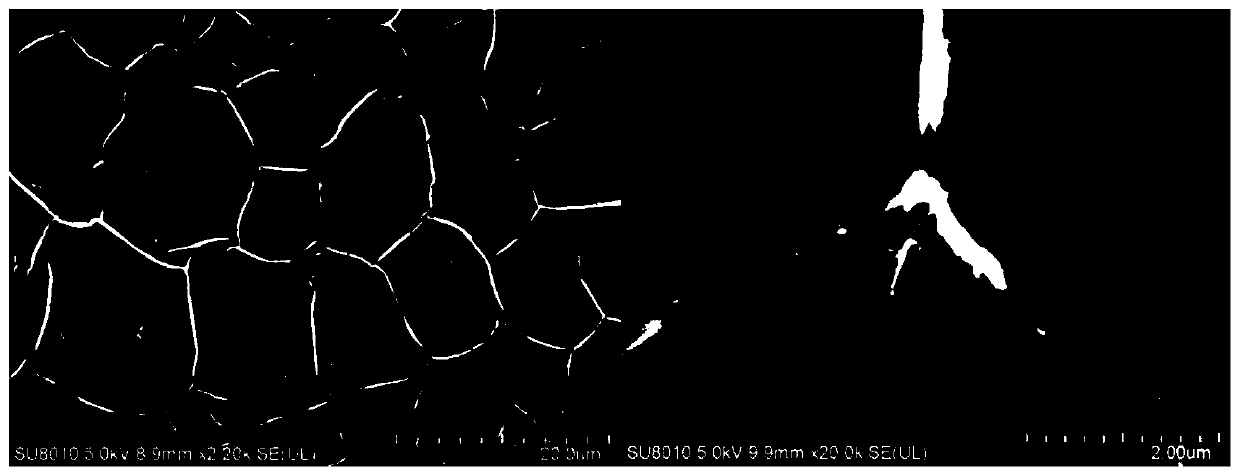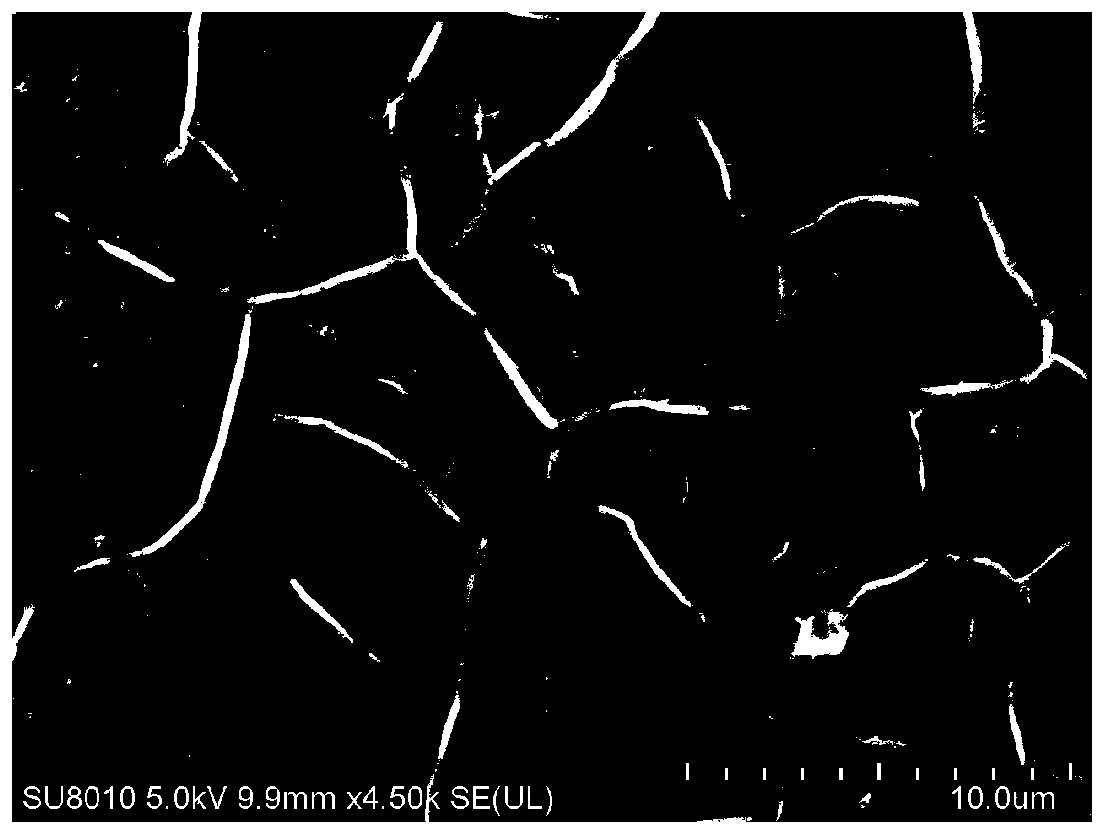A Method for Inducing Super Graphene Network Structure Using Femtosecond Pulsed Laser
A technology of laser induction and network structure, applied in the direction of graphene, chemical instruments and methods, nano-carbon, etc., can solve problems such as complex processes, and achieve the effect of simple process and good joint quality
- Summary
- Abstract
- Description
- Claims
- Application Information
AI Technical Summary
Problems solved by technology
Method used
Image
Examples
Embodiment 1
[0017] Embodiment 1, a kind of method utilizing femtosecond pulsed laser to induce super graphene network structure comprises the following steps:
[0018] 1) Non-covalently modified MWCNTs: prepare 50 mL of 1% sodium dodecyl sulfate SDS aqueous solution in a beaker, weigh 100 mg MWCNTs and transfer them to the sodium dodecyl sulfate SDS aqueous solution, and first use a tank-type ultrasonic cleaner to sonicate 20 minutes, and then use the angle ultrasonic machine to conduct ultrasound, the specific parameters of the angle type ultrasonic machine: power 60W, ultrasonic time 1 second, interval time 1 second, ultrasonic time 6 hours, to obtain non-covalently modified MWCNTs in the water environment;
[0019] 2) Construction of the inductive substrate: the non-covalently modified MWCNTs in the aqueous environment were deposited onto the silica SiO by a spin-coating process. 2 surface of the substrate, and then move the spin-coated substrate to a heating station and heat it at 60°...
Embodiment 2
[0022] Embodiment 2: the embodiment 1 step 3) is adjusted to: the laser energy of 70mW is with the laser rate scanning induction substrate of 25mm / s, and other step order and parameter are constant, can obtain the smooth super graphene network structure of joint, refer to image 3 , the super graphene network structure is basically complete.
Embodiment 3
[0023] Embodiment 3: the embodiment 1 step 3) is adjusted to: the laser energy of 60mW is with the laser rate scanning induction substrate of 20mm / s, and other step order and parameter are constant, can obtain the smooth super graphene network structure of joint, refer to Figure 4 , the super graphene network structure is basically complete.
PUM
 Login to View More
Login to View More Abstract
Description
Claims
Application Information
 Login to View More
Login to View More - R&D
- Intellectual Property
- Life Sciences
- Materials
- Tech Scout
- Unparalleled Data Quality
- Higher Quality Content
- 60% Fewer Hallucinations
Browse by: Latest US Patents, China's latest patents, Technical Efficacy Thesaurus, Application Domain, Technology Topic, Popular Technical Reports.
© 2025 PatSnap. All rights reserved.Legal|Privacy policy|Modern Slavery Act Transparency Statement|Sitemap|About US| Contact US: help@patsnap.com



